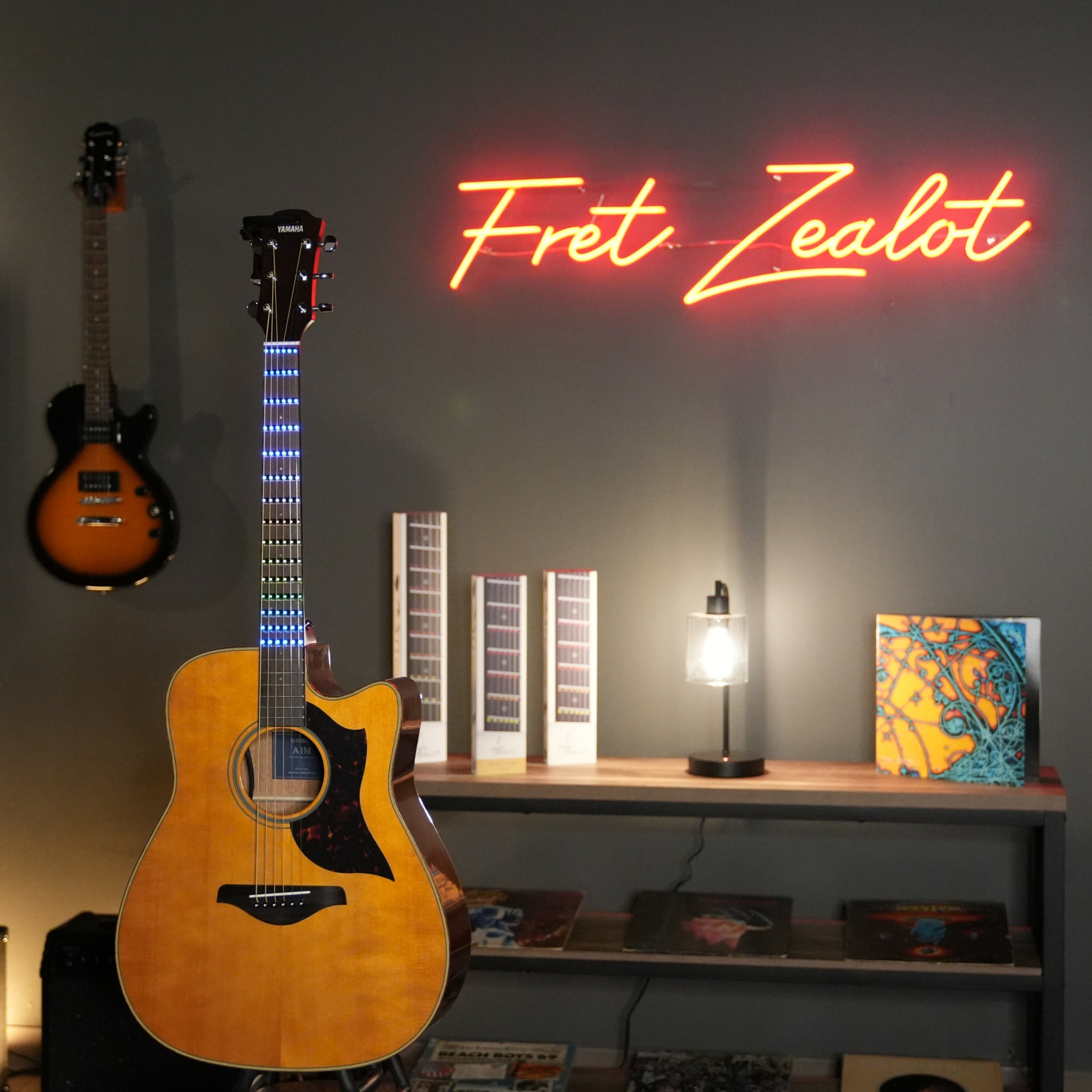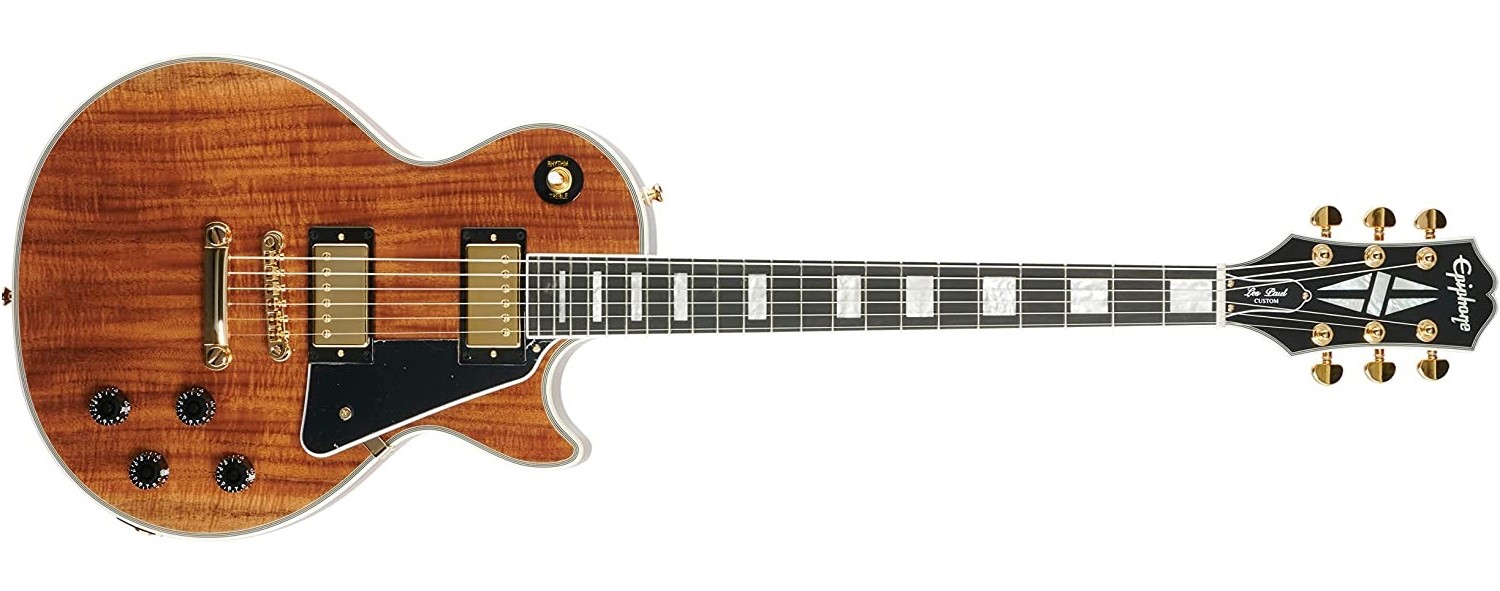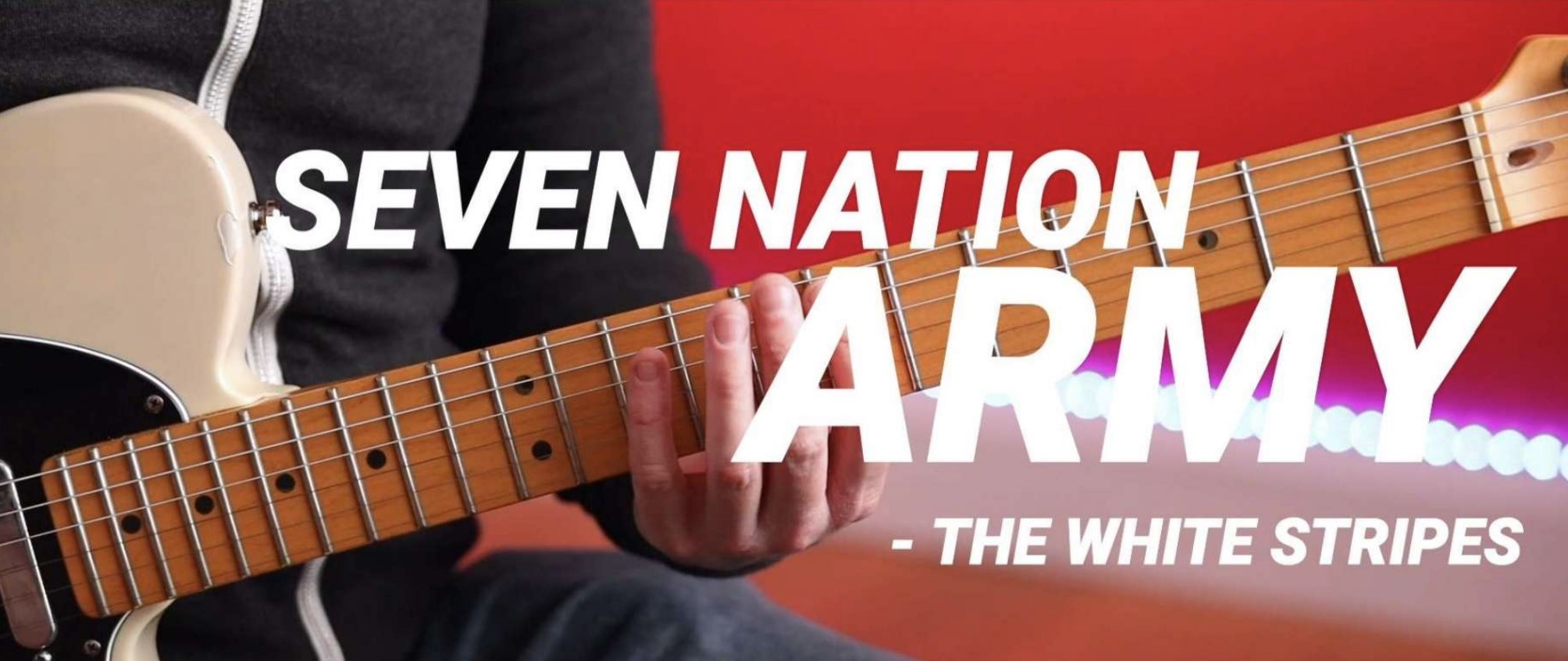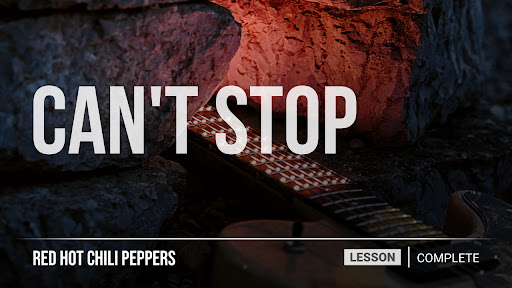REVIEW: Yamaha A1M electric-acoustic guitar
We reviewed Yamaha’s A1M electric-acoustic guitar

Here’s a transcript of the review:
This is the Yamaha A1M, a beautiful cutaway acoustic with some top notch features. I’m going to be walking you through this beautiful guitar and letting you know what it has to offer.
First, aside from the beautiful sound, let’s talk about what comes behind that. There’s a beautiful selection of woods that comes in this guitar, starting with the spruce top – Sitka Spruce – this guitar is a Vintage Natural finish which has a little bit more of a darker amber color to it. I think it stands out a little bit compared to the typical natural finish, which is more translucent, more natural wood grain, and lighter. This one’s a little bit darker and has a sort of vintage vibe to it, but also that sort of amber color, which is just really warm and draws me in visually, and then on the body we have binding all the way around the body, which is actually mahogany binding and it looks really amazing from the front, and then on the sides too we got binding on the front and the back. It’s a really nice visual feature that’s on this range of guitars. This is a very approachable guitar, but slightly on the more intermediate price range of Yamaha, and we’ll talk about what that gets you in terms of added features. Continuing on with the woods, Sitka Spruce top, the mahogany binding, and then mahogany throut on the sides. Mahogany back and then mahogany neck, so really a traditional and typically appreciated combination of woods. Rich tonal responses that you get from a mahogany guitar – a really smooth mahogany neck – and then Rosewood on the fretboard and Rosewood on the bridge. Yamaha is not stopping short with any of the of the wood selections. You can’t go wrong in my opinion with this combination of woods for an acoustic, and then simple but classic you know appointments and looks throughout. I’m finding the fretwork to be really nice on this guitar, very smooth and easy to play. I’m finding it very responsive, very friendly – comfortable and just sounding really nice like a really full response. I’m getting a lot of clarity with the notes that I’m playing, and it’s just set up great right out of the box. That’s a testament to the Yamaha quality – they are just so very consistent with the guitars that they produce, and the quality that you get at the price you pay, compared to the other lower price Yamaha guitars, this one comes with the added bonus of the of the binding. The overall construction, the bracing system that comes in this guitar, is a step up. It’s also got the electronic system, we cannot leave that out – it comes with the Yamaha electronic system with the underbridge pickup. It sounds really awesome. It’s always great to have a guitar that you can plug in and the audio jack is right here and then it’s got the battery compartment. This guitar has diecast chrome tuners on the neck and on the headstock, and then it comes with elixir strings on. That’s actually a really nice bonus – I recommend those strings for the longevity that they give before they start to get dull. So, great choices all around in terms of the sound and the vibe.
You can’t really go wrong with a full size guitar and the cutaway – it’s a very comfortable design. I appreciate a nice cutaway guitar due to the comfortability, and this body style is just really fantastic. Another really nice little addition is just the the shape of this pick guard. I think it’s got a little bit more of a stylized look, so these are just some of the nice visual but then also practical updates that you get with a slightly nicer Yamaha. You know all of the Yamahas are really top-notch throughout the price range, but if you were looking for a guitar with slightly more appointments like the binding and a little bit more of the of the premium sort of attention to detail that you get with the craftsmanship, this is a really nice one to look at. Especially because of how great it sounds and how nice it looks at the price, the A1M really delivers for me.
I would really pick this guitar up from the Yamaha line at this price range because it just sounds so good. It’s very comfortable and it’s just very solid throughout. I really like the wood choices – the look of this guitar is amazing and there’s really just nothing holding this guitar back from doing what it needs to do across different genres. You could really stand out and play with rock, folk, anything that you would want to – it’s a really nice sounding acoustic guitar.
If you’re playing out or wanting to plug in this, it is a great one to do it with because it’s got the awesome pickup system. Let’s walk it through its paces and hear how it sounds, both acoustic and also plugged in – and see what sort of tonal variety we can get across a different set of riffs.
Before I get started with the pickup demo, I just wanted to mention that this guitar also does come in a really beautiful vintage sunburst finish as well as a black finish. We have this one picked out for the demo today, but you should definitely consider checking out the other finish options that are available for this guitar. It’s a really well-curated, nice-looking line for the A1M that includes both Sunburst, black and then natural. They all feature the same specs and the same pickup.
The pickup sounds good, and also the natural voice of the guitar is beautiful. I think that translates well to the pickup sound, so no matter what your needs are as a player, this guitar can really meet it. It’s got the higher fret access so it’s easy and really clear sounding throughout. I’m not getting any like dead notes or buzzing. The craftsmanship is really really above average on this guitar, especially for the price, so overall for the A1M, it’s a highly recommended guitar for me. If you’re looking at a slightly nicer acoustic guitar, I would steer in the direction of the A1M. I think it really punches above its weight in terms of the price, which is really typical for Yamaha. Other guitar that you would consider in this range would be the FGX800C, which we also reviewed. This guitar gives you a little bit more in terms of aesthetic features, the wood selection, the colors that are available.
So if you’re looking for something that’s just a nice guitar, that you’re going to really like having in your collection, I think this one really does stand out a bit more.That’s why I would recommend this one over other options that are out there, and on top of that, it’s just a great performing tool, a beautiful sounding guitar, and I’m really having a lot of fun playing with it. Thanks for listening, let us know what you think about this guitar – have you tried a Yamaha acoustic before? Let us know.
You can get this online – it’s in stock in our shop. Rock on.






























































